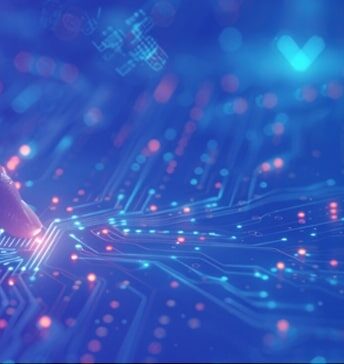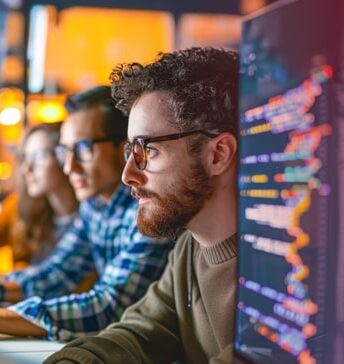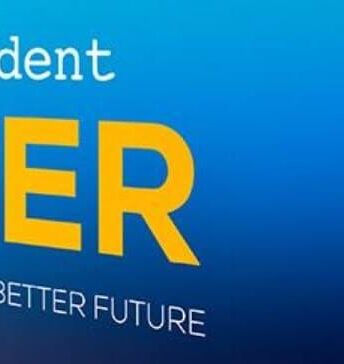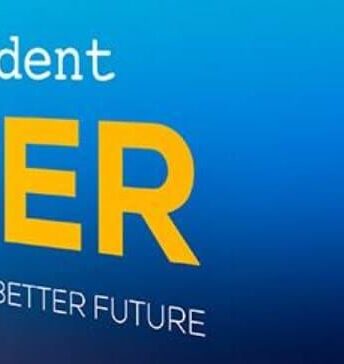An article by Fabio Caversan, originally featured at Forbes here.
Artificial intelligence (AI) already touches so many parts of our lives — whether we know it or not. Smartphones and chatbots. Traffic pattern analyses. Email spam filters. Machine learning and AI exert profound influences over the ways we communicate, socialize, work, travel and spend our time and money.
While charting AI’s past and future possibilities from a philosophical perspective provides some value, it’s also important to take a practical view of how we use AI today — and what we can expect to see tomorrow. Given the speed with which AI has moved from futuristic technology to everyday reality, what can we expect in the next two years? What can our present tell us about our AI future?
Getting Smart
There are myriad applications where AI has quickly become an essential everyday tool (e.g., consumers using map applications on smartphones or companies relying on AI to predict revenue trends, plan budgets and communicate more efficiently with customers). However, there are perhaps no more compelling examples of how AI has become an integral part of our lives than in the places and spaces where so many of us already live, work and play: cities.
“Smart city” is an increasingly familiar term as strands of AI-based technology are woven into the literal and figurative infrastructure of cities worldwide. It’s happening in cities like Barcelona, where AI-based technologies facilitate a more efficient and environmentally friendly bus network (including solar-powered shelters with interactive touch screens) and smart parking sensors to reduce vehicular traffic. In Singapore, residents benefit from an AI-powered healthcare network that affords more connectivity, access and flexibility of care.
In London, one of the world’s great cities is beginning to untangle the Gordian Knot of two millennia worth of tangled public infrastructure and haphazard design by using smart sensors to improve traffic light efficiency and alleviate traffic congestion and by distributing public bikes and scooters based on weather conditions, events and traffic patterns. Here in the U.S., Miami is using AI to monitor storms and sea levels to predict the impact of climate change, and Houston — one of the fastest-growing cities in the nation — is embracing a holistic smart city solution to combat urban sprawl with efficient new parking and public transportation solutions.
Smart city AI technologies are proliferating around the world. Smart streetlights and smart interior lighting for private and commercial facilities are improving energy efficiency. Networks of cameras and sensors are improving traffic light efficiency and analyzing traffic patterns, crunching an enormous volume of data and integrating variables like weather conditions, special events and seasonal considerations to predict and improve everything from pedestrian volumes and vehicle patterns to demand on hotels and public infrastructure. AI-powered traffic systems have fewer accidents and fewer traffic issues, and the promise of less pollution and greater access and mobility makes more widespread AI adoption a certainty.
AI isn’t just affecting the way cities work, but the way they are built. AI-powered insights will inform the design of future urban environments — from benches, parks and pathways to storefronts, sidewalks, roads and roundabouts. The potential impact of AI tech is so profound that many major cities either already have or soon will have a smart city council to guide these decisions and implement these technologies. Smart city programs are increasingly understood to be an evolving process — an ongoing commitment to leveraging AI tech to use historical statistics, real-time situations and smart predictions to help civic authorities make thoughtful and informed decisions.
The Pandemic Push
The world got an unwelcome crash course in the value of AI systems with the onset of the Covid-19 pandemic. AI systems have been credited with helping detect the initial outbreak in Wuhan, China, and are providing scientists and healthcare professionals with a better understanding of how and where the virus is spread. Publicly available data has helped researchers evaluate containment measures and implement the kind of track-and-trace initiatives that have effectively mitigated the disease’s impact in places like New Zealand.
The Covid-19 crisis has accelerated many existing trends, and AI is likely no exception. AI-powered measures could potentially protect against future pandemics and limit the initial impact of emerging public health crises. From early detection to information dissemination to traffic flow to logistical and public health measures like temperature-taking or crowd monitoring, AI could make us better prepared for the next crisis.
Dangerous viruses are an age-old threat, but in today’s connected world, the Covid-19 pandemic feels like a new form of emergency. Civic leaders have faced unusually urgent and time-sensitive challenges, forced to make smart and speedy decisions about lockdowns or how best to implement state and federal mandates. There’s obviously no magic bullet for deadly viruses that spread via airborne transmission, but if AI-based tech can help local governments keep more people safe and healthy and more small businesses open and operational, it could have a profoundly beneficial social and economic impact.
Digital Revolution And A Moral Reckoning
The AI-driven shift from physical to digital engagement has been supercharged by Covid-19 and our desire for contactless service and seamless delivery options in a world becoming more connected — even as it grows farther apart.
However, the growing sophistication and ubiquity of AI applications raise critical new ethical concerns, including issues of bias, fairness, safety, transparency, privacy and accountability. While AI-based technologies are evolving with extraordinary speed, discussing AI’s future without addressing those ethical concerns is like debating the contours of the iceberg beneath the surface — without stopping to account for the ways in which that iceberg will impact the course we chart or the thickness of the hull we design in the ship of society.
Ultimately, however, that calculus shouldn’t be a burden but an opportunity — a chance to reckon with and reconcile some of society’s most fundamental challenges. In that sense, the future of AI isn’t just as a technological marvel, but as an ethical clarifier. Not just a digital revolution, but a moral one.



















